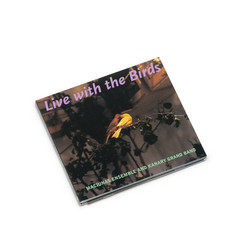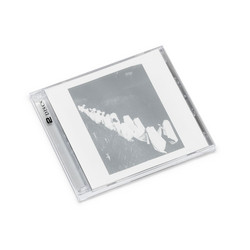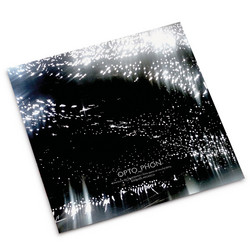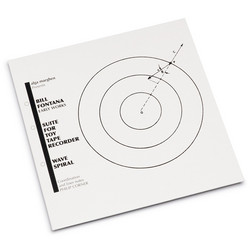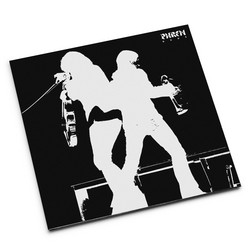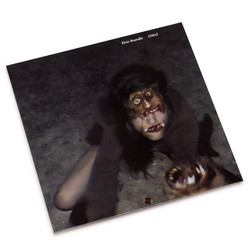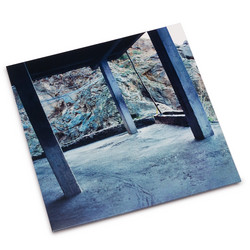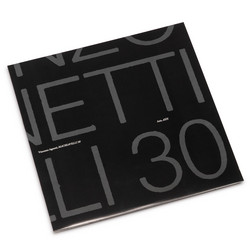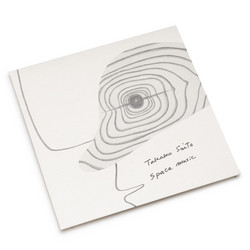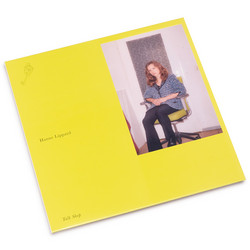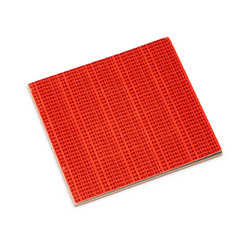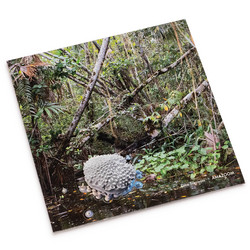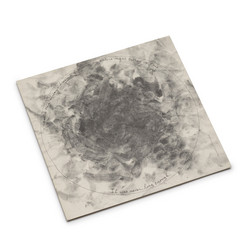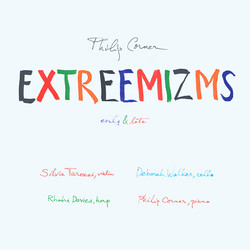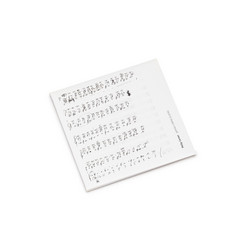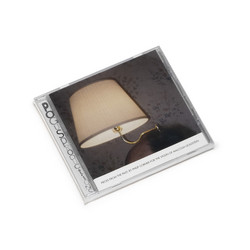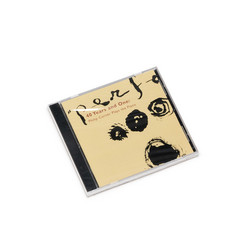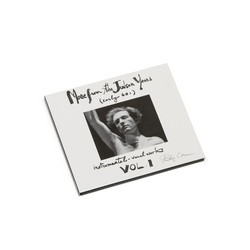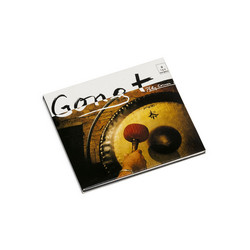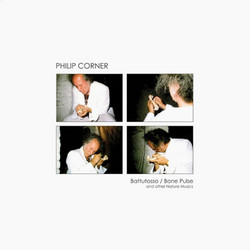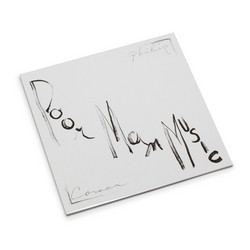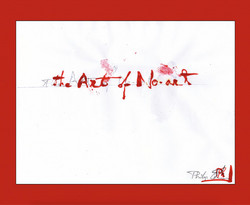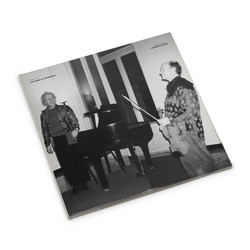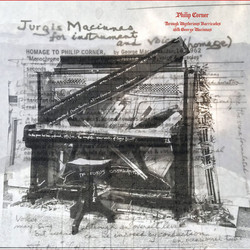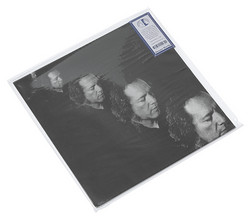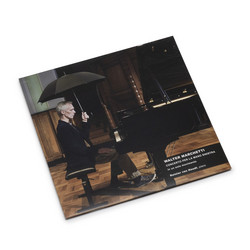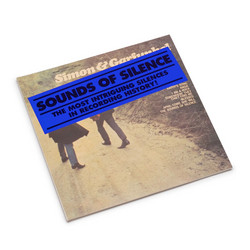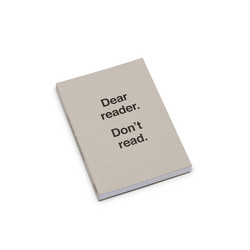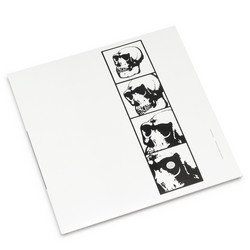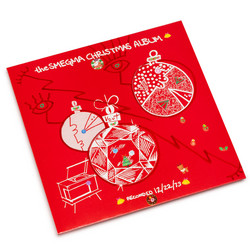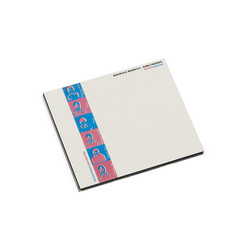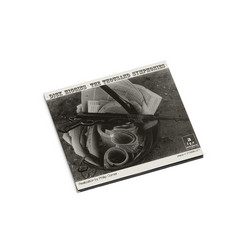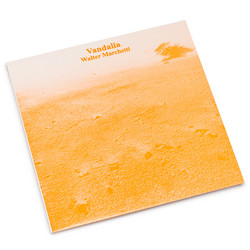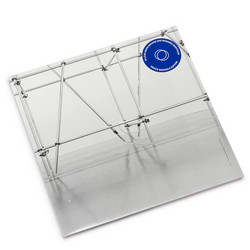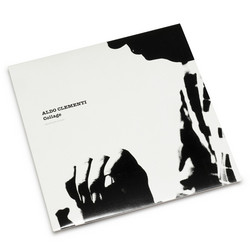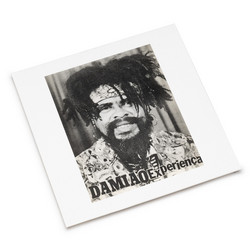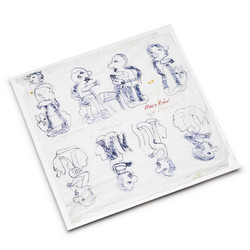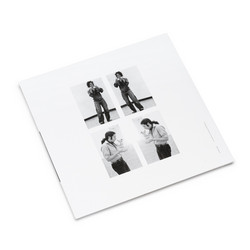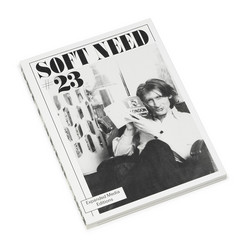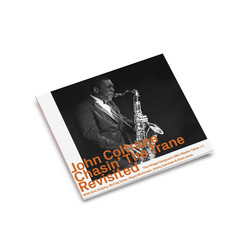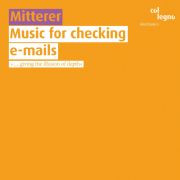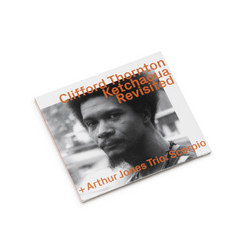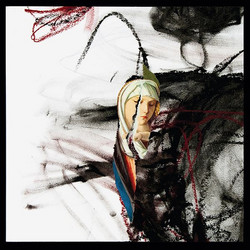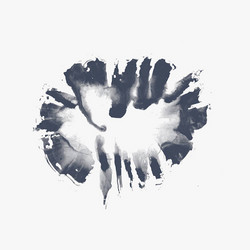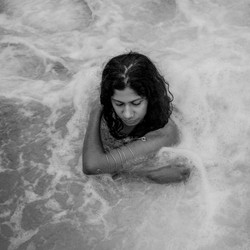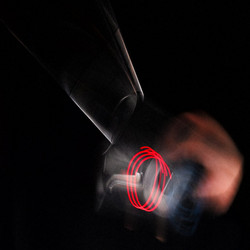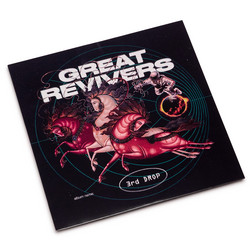* Edition of 30 signed and numbered linen boxsets. 4 signed LPs with hand-drawn sleeves, also including a 112-page signed book with title page in calligraphy * Alga Marghen started their activities in 1996 soon to become a reference for experimental music, sonic arts and sound poetry publishing. Now in 2021 it’s time to celebrate the 25 years of activities and we decided to start by presenting for the first time on vinyl some of most radical and uncompromising Fluxus events. alga marghen is therefore very proud to present Philip Corner “FLUXSTUFF”, a 4LP edition in linen box, limited to 30 signed and numbered copies, also including a 112-page LP-size signed book collecting some of the most relevant documents from the early days of Fluxus.
Each LP comes with hand-drawn sleeve by Philip Corner as well as signed labels. The signed and numbered book also has an individual handmade calligraphy on title page.
The 112-page LP-size book includes reproduction of scores, original posters and programs, diagrams, letters and testimonies by among others George Maciunas, John Cage, The Living Theatre, Carolee Schneemann, George Brecht, Dick Higgins, Charlotte Moorman, Wolf Vostell, Emmett Williams, Tone Roads, Zaj, Alison Knowles, La Monte Young, Jackson Mac Low, Malcolm Goldstein and Max Neuhaus!
LP 1 . “Lucinda’s Pastime” (1962)
tape: kitchen sink at Sullivan Street apartment, Wollensak tape recorder.
“I was asked to be an available resource for the group, to be used for music if needed. The first to take advantage of me was Lucinda Childs. Her very first dance was an amazing solo, austere yet suggestive of aqueous indulgence. She brought me some source material, recorded water……….. which, with her permission, i preferred to remake and start out fresh. 3 movements, and per each a well worked-out technique, each more than long enough to serve for the dance’s estimated durations. Made in the kitchen sink, with primitive equipment- - -and all the different kinds of plates and bowls in the house. I’m particularly fond of the slow middle movement, an Andante Cantabile.
The enjoyment of listening to this music liquide at night, in bed, with Elisabeth, and always finding it too short, made me imagine acoustic constructions of long duration, meant for the home. Or other environments. A music not as mere background- - - - - - - - -but to be lived in.”
. “Punkt” (1961)
recorded at Haroud’s restaurant, New York City, March 18, 1962 ensemble of staccato sounds: cello pizz., Dick Higgin’s bass thumb piano, wooden furniture legs, ceramic tiles by Ina Bakker, etc.
“Since the critics were calling us the plink plunk school, I contributed a composition favoring only these punktae for centuries having defined and inhibited Western music.”
LP 2 . “Oracle”
An Electronic Cantata On Images Of War: Strike Week Version (1962)
realization on various tape machines, in part with the help of James Tenney
“During the rehearsal at the Living Theatre of their production of Brecht’s Man Is Man on the the Becks asked me to do a new music for their inter-scenes. This was with only 2 weeks to the opening. I thought i had a good new method of generating so long a music in so short a time with tape recorders………. so i ant out to Tenney’s New Jersey home where, while he was out at Bell Labs becoming an important computer pioneer, i was left to wrestle with his two tape-decks. finally I could not do it.
But the material was worked on after, to become a kind of ‘Cantata’ “On Images Of War”. All the sounds in violent counterpoint. the seductive opening quiet the delicate suggestion of a fanfare - -before the outburst- - a reminder of the time when i was still playing trombone. All the sounds were made by me at home…..playing with noises, real Noises, with a deliberately pulverized reality made of over-recorded close-miked crashes which even blew the machine’s circuitry. ………My favorite sound there: spinning the loose toilet seat……. it’s somewhere in the poly-pulse march section.
Mixed into the Darkest White-Noise ever made, following- - -a 5 minute soundbath- - -(seems long at that time)- - -who could tell what got thrown into that Black Hole? Thunder, Locomotive Engines, Racing Cars, Screams and Yells and Hysterical laughter, all disappeared without leaving a trace or seeming to increase Volume of Violence by one jot. the Sudden Silence. and a sequence of Sudden Silences broken by Sudden Sounds. (i couldn’t resist one delightful moment of levity she, appearing and disappearing, coming from and going to - - . only the Army knows where……. a March goes by……..forwards and backwards……..as an endless loop).
The well-known directors of the theater , the ‘Living’ , Julian Back and Judith Malina. behind a lot of in-the-streets theatre too. Interface with politics. There was a General Strike For Peace. an absurdly noble gesture. Boycott practically everything! made me feel- - -if not think- - -that i was accomplishing something. and maybe, spiritually i was.”
LP 3. “Music, reserved until now” (1963)
Judson Memorial Church, New York City, January 24 (or 25), 1965
performed with the dance of Susan Kaufman
Charles Adams, A-yo, David Behrman, Philip Corner, Malcolm Goldstein, Dick Higgins, Joe Jones, Alison Knowles, Jackson Mac Low, J. H. McDowell, Charlotte Moorman, Chales Morrow, Nam June Paik, Joshua Rifkin, Chieko Shiomi, Florence Tarlow
“I did hold back some years the first performance of this score which asks for non-traditional sound sources. But the reserve can be understood as well as traditional restraints operative until now… what is it that can be done right on that precarious edge where beauty passes out of control. Rough materials become shapes into sense --- by a sense of musicality which does require orthodox musicians.
Someone came up to me after the performance with the compliment “I’ve never heard anything like this before”. Nice, but she turned out to be more sophisticate than I thought, continuing “It’s nothing at all like John Cage!”. Indeed.
. “Composition with or without Beverly” (1962)
Once Festival, Ann Arbor, Michigan, November 24, 1963 for a dance by Beverly Schmidt
Philip Corner: piano with prepared tape sounds
“Part of an evening-long music requested (rather: Frieda Miller commission) by Beverly Schmidt (now Blossom). For the dance a number of distinct textures and characters were combined (“Lovely Music” being part of it too).
I have here extracted the piano improvisation I put over pre-recorded tape sounds already derived from piano – and very bashy Korean gongs -- all in all a quite marvelous mess.”
LP 4. “Everything Max Has: as an Afterward” (1964)
Max Neuhaus solo, ONCE Festival, Ann Arbor, Michigan, February 11, 1965
(duration 17’28”)
“The max is (or was) a new music percussionist famous for filling entire stages with tons of equipment for works of Cage, Feldman, Stockhausen, and all the like.
The afterwards makes a performance of Max’s taking down all this stuff, and being the last piece of the program, permitted him for once to enjoy the party afterwards. First formulated as intermission (Charles Ross’s dance sculpture being restructured) and then expanded in concept to any purposeful work done before, after, or during.”
. “From Thaïs” (1962)
records into Wollensak tape recorder, mixed with Y-branch connector (duration 09’42”)
“I believe that i have been the only composer to have made a music at the request of Yvonne Rainer.
My music for Yvonne was a tape piece, collaging mostly extracts from ‘Thaïs’ by Massenet. which is what she asked for. If i remember right it was for the section, a duet, where Trisha Brown throws a black brasserie up in the air and catches it on her breasts. (This is just as nice to imagine as to remember).
Unforgettable moment in the making…… Mix after Mix made to get the thrown-around fragments of the opening - through two cables going into a Y-branch plug (- -the cheapest kind of electronic hardware) until it is all down on one tape and then, into the remaining channel to be Mix’d with all that Mess, goes the heroic trombone passage from the Overture, tuneful coherence making a mighty crescendo through.”
As Philip Corner wrote about those experiences: “remember? when you made those things at home, on the best equipment you or your other poor friends could find? the dancers all had portable Wollensaks; and you had that japanese taperecorder with the built-in mike, not too bad as quality but only affordable because you bought it (for $100 if memory is right) in the Army PX in Seoul, before lugging it with you back across the Pacific in a troopship. Indeed that was the only piece of furniture on your tatami floor on the Lower East Side that summer in 1961 when Jim Tenney came over who is to become one of your greatest friends met through the tape he brought with his Seeds and you turned him on to the new piece you had just done in Korea.
What was i doing there? A testing of fundamentals. : refusal to be banished as junior faculty somewhere in the Middle West- - -orthodox career. HigherEducation students stupid enough…..let me try teaching at the bottom. “Uptown” and “Downtown” more than the mere geography of Manhattan Island; around 14 St a spiritual dividing line- -separate the predictably official from a promise, a creative adventure. maybe even “a magnificent life.”
a group of dancers and musicians, and visual artists interested in performance, and writers were already meeting once a week in a loft on the Lower East Side. The rule was……………well there just were no rules. Just generosity of spirit and spirits burning with imagination and enthusiasm. Everyone was willing to try whatever any one of the group wished to try out. Neither was there any group, and kind of recognized belongingness; community of interest produced a cooperative unity. There was, as a line of research, that art = everyday-life equation. Choreography made by non-dancers.”
